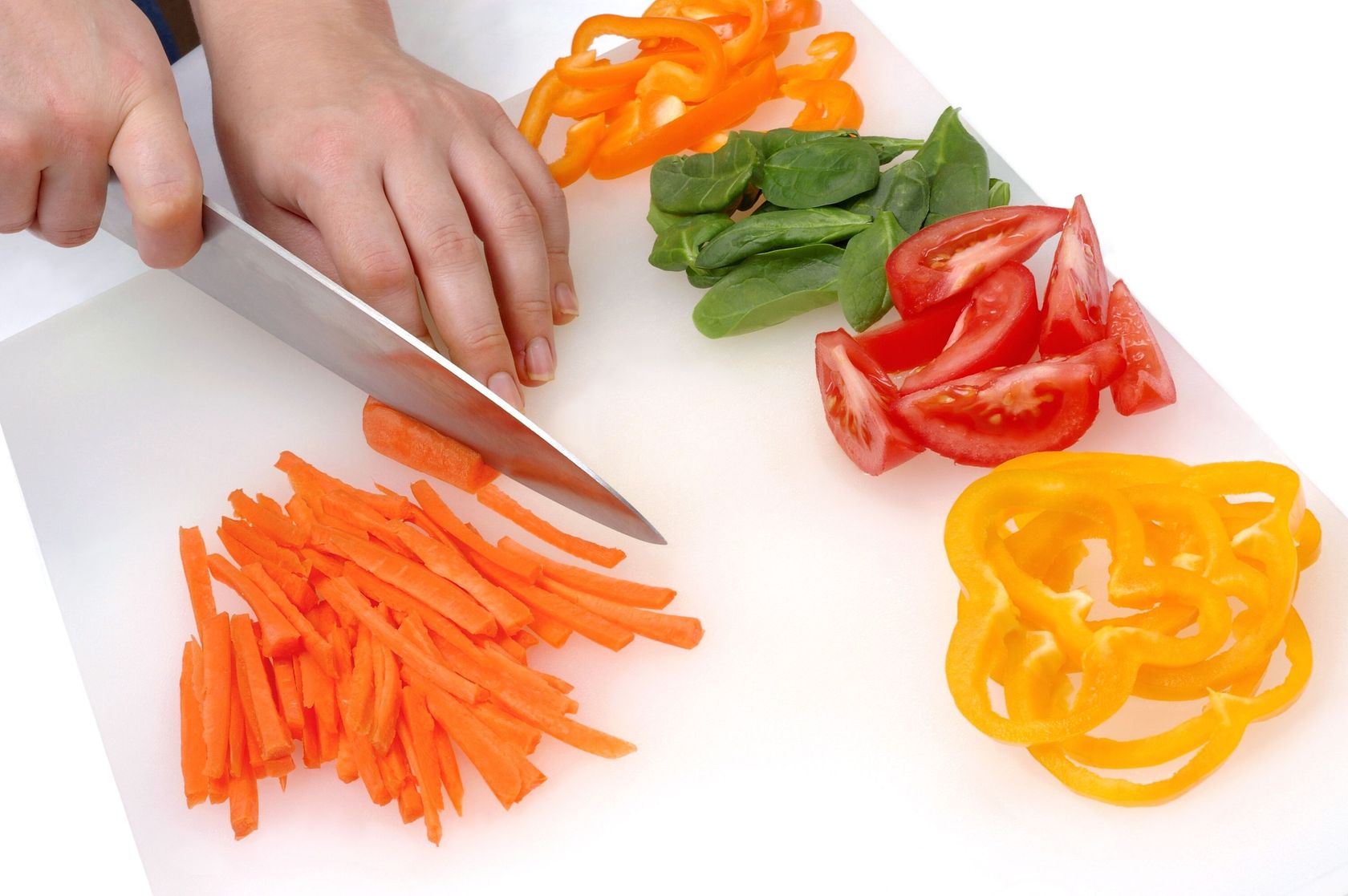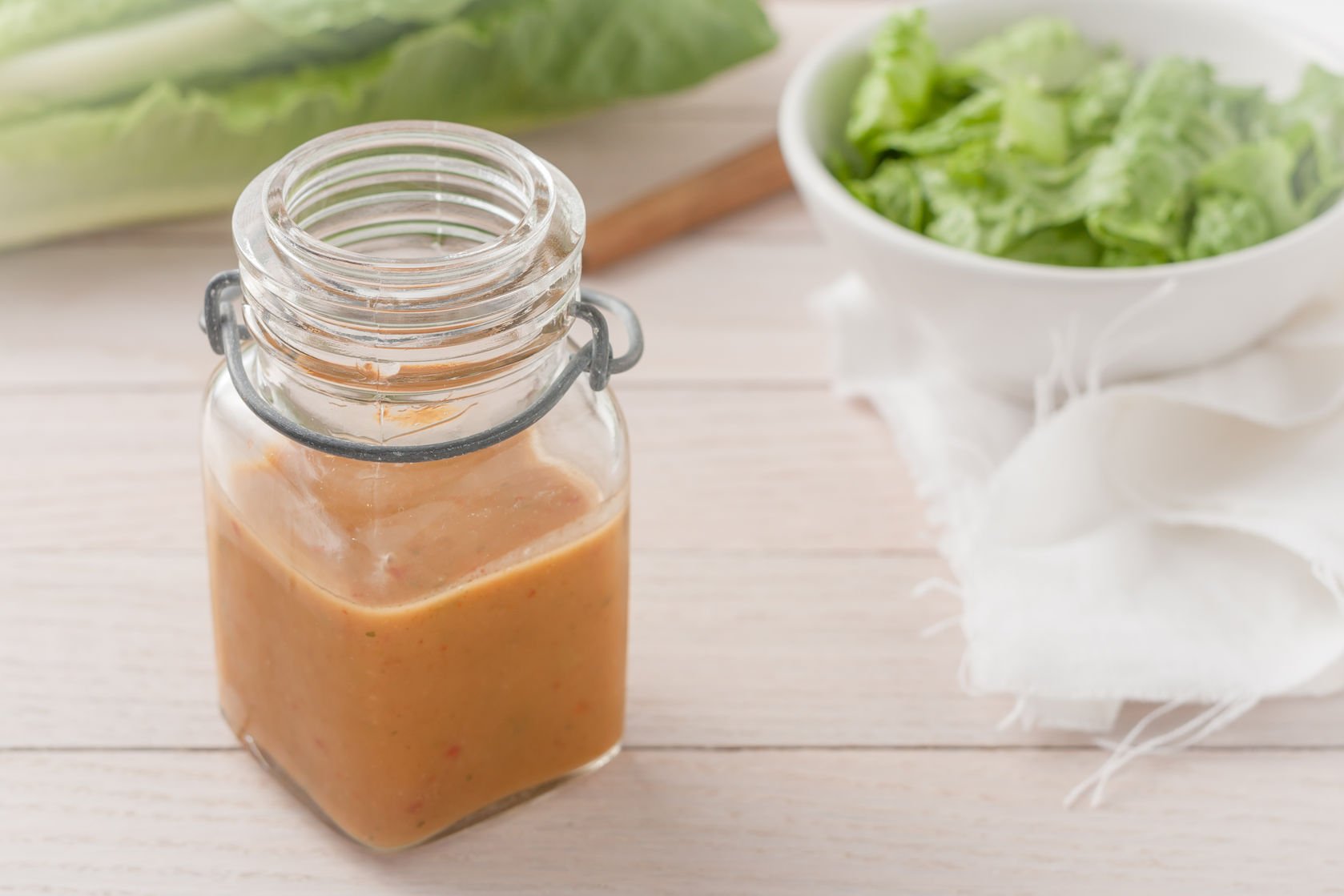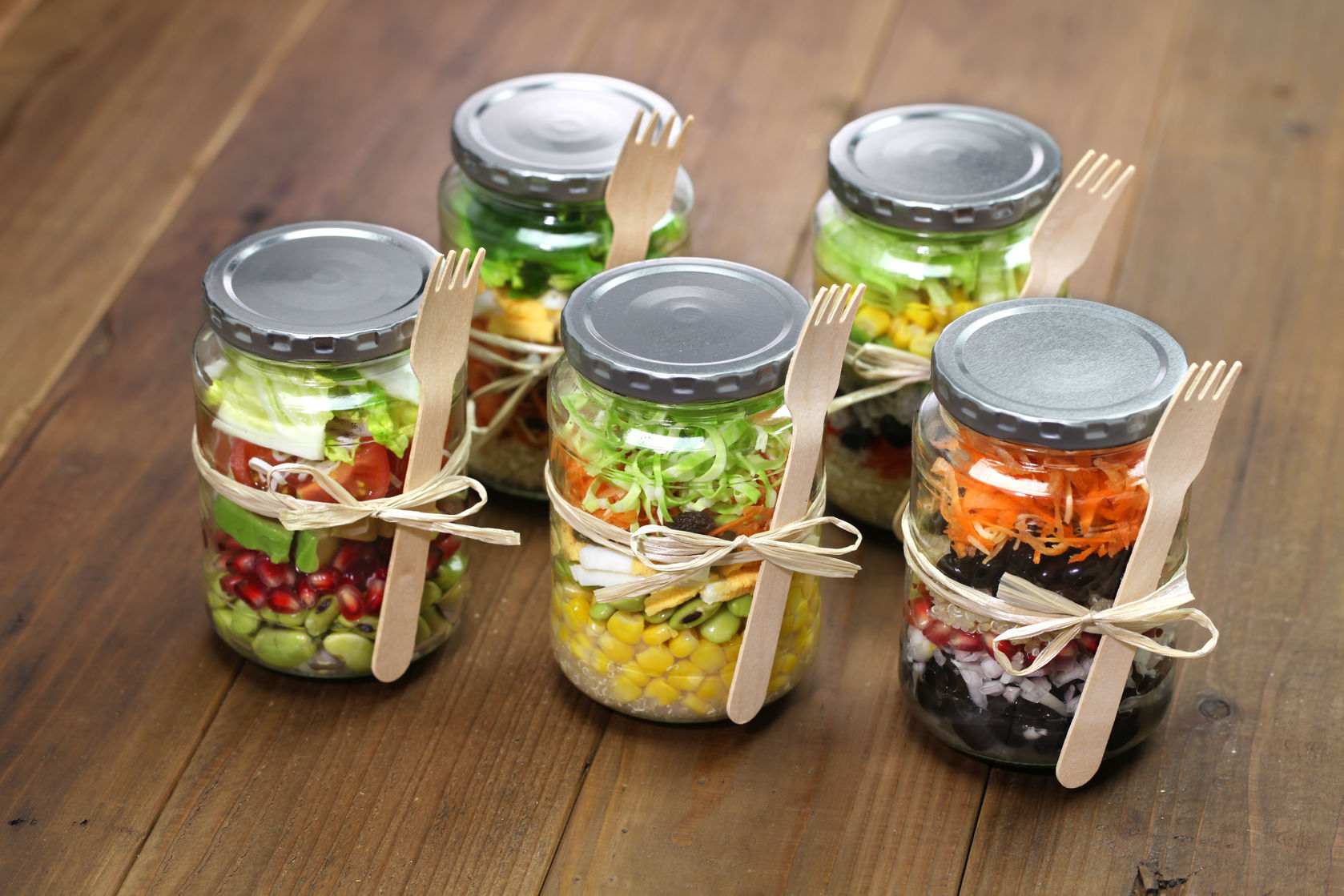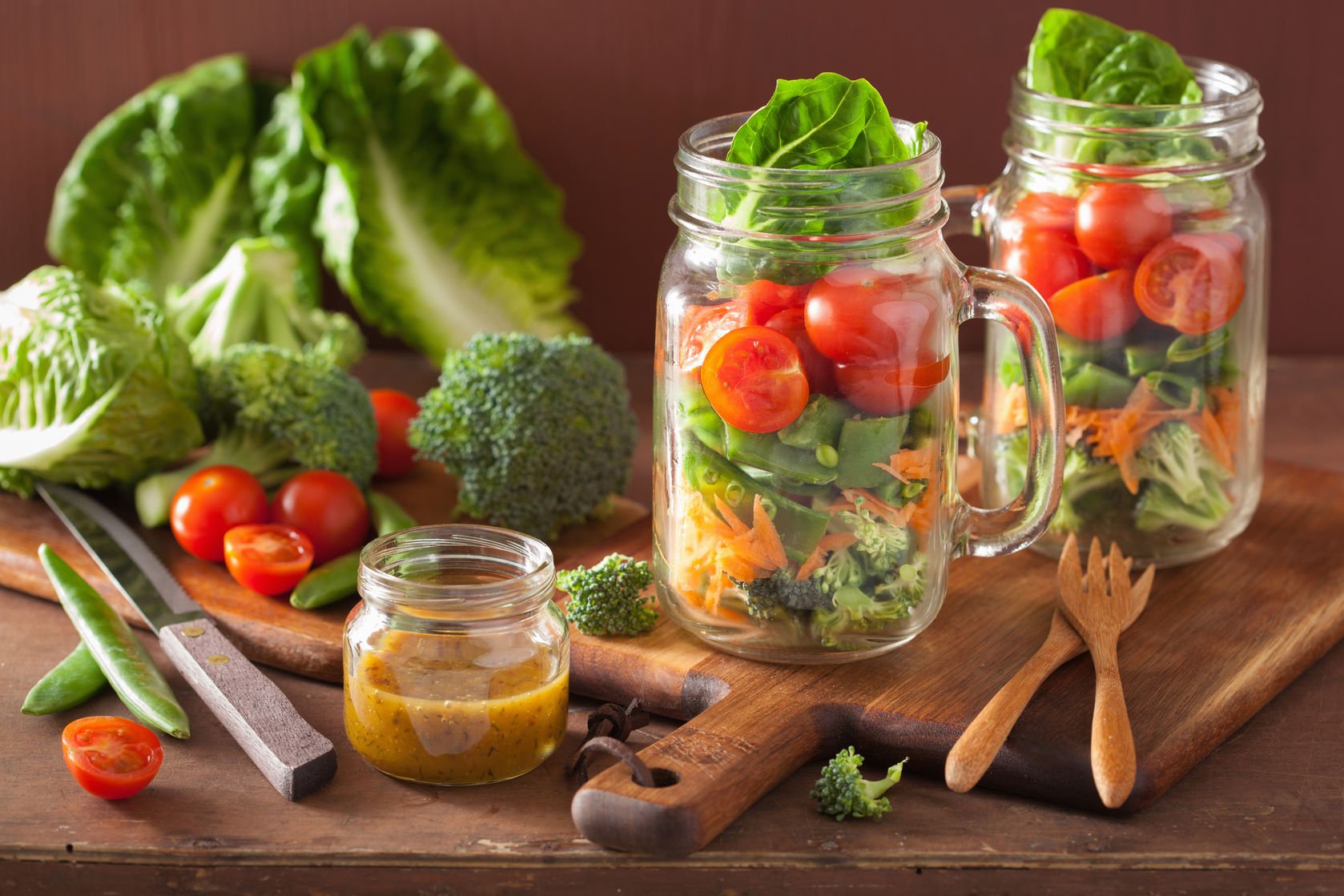Mason jars are a popular trend these days. Just do a quick search on Pinterest or Google and you’ll find them filled with many things, such as candles, sand, flowers, cocktails, and (brace yourself) even salad ingredients! That’s right…They’re called Mason jar salads.
Convenient to take to work or school, these ‘salads in a jar’ are gaining popularity. There are loads of super-delicious and unique recipes ideas for these fun DIY packaged salads. But, we’ve got a few of our own, too…
Who Should Eat Mason Jar Salads?
Mason jar salads are a simple way to help maintain a healthy lifestyle when you’re on the go, but they are also ideal for weight loss, meal planning, and for those who are serious about eating right. If you are ready to take your diet to the next level by incorporating more raw foods, and live active cultures into your regimen this could be your new thing!
No matter who you are, you can fall in love with these cute pre-packaged superfood salads. For anyone looking to avoid junk food, processed foods, and the drive-through, Mason jar salads can be a great way to substitute fresh produce for processed foods.
How-To Make a Mason Jar Salad for Beginners
While many Mason jar salad-making pros apply different ingredients to the creation of these trendy DIY salads, let’s start with the basics:
The very first ingredient to add to the Mason jar is the dressing. While store-bought dressing often gets a bad rap due to its high fat content and artificial preservatives, there are some decent options if you are not quite yet an alchemist in the dressing department. Pick your favorite dressing with the most natural ingredients, and add 1-4 tablespoons per 32-ounce Mason jar.
Once the dressing is added, the ingredients will go from thickest at the bottom to thinnest at the top. Start with grains, or legumes for a good source of protein and fiber. These include everything from kidney beans, teff, millet, amaranth, and lentils. Decorate your Mason jar salad with lima beans or black beans beans, chickpeas, or any of your favorite foods in this category. Then you can add the topping ingredients to the salad.

Salad Toppings
Some of the best vegetables to add into a Mason jar salad include carrots, beets, radishes, bell peppers, and celery. Due to their thickness, coming into contact with dressing won’t affect these veggies during storage in the Mason jar.
The next category is a protein source from animals you may want to add. Keep in mind, if you are intending to eat your salad within 24 hours of packing it, then the meat, cheese, egg, or vegetarian protein substitute goes next. It’s best to add these items the same day you eat the salad. So, if you plan to do your food prep for the week, add these in last.
On top of this protein selection you may add fruits, and softer vegetables. This is where goodies like tomatoes, avocados, dried fruit (cranberries, raisins etc.), or any other juicier produce item can go. This is also another item that can be added at the last minute — if you are prepping for the week — to ensure the crispness of your salad. These items bring vibrant color, and life to your Mason jar creation!
If you want to add lighter grains to your salad such as quinoa, barley, or rice, you can add them to this second-to-last layer. This is also a great time to add nuts such as cashews, sliced almonds, or walnuts to the jar for a satisfying crunch, and a dose of fat-burning omegas.1
Finally, it’s time to add in your salad greens. Any variety of leafy green veggies such as romaine, iceberg, spinach, parsley, dandelion, or kale go here. You can easily add them to the top of your jar, and feel free to chop these ingredients finely for optimal digestibility.
Now it’s time to toss the salad! If you are on-the-go, you can eat your salad straight out of the jar by shaking it up, and down 3-5 times before removing the lid. Just remember to leave some additional space open in the jar during the canning process. Once the top is off, you can dump the jar’s contents out into a bowl, and do some light tossing as well if you are in a more formal eating setting. You can also add any additional toppings here like fresh feta cheese, a drizzle of olive oil, additional greens, or more dressing.
How-To Make a Mason Jar Salad for Advanced Cooks
For those who are more savvy with canning, this second approach to the Mason Jar salad creates a fermented meal rich in digestive probiotics, and enzymes— similar to kimchi. With this methodology, you will be making a custom salad dressing from scratch, and applying it to your ingredients before it goes into the jar.
If you are new to the idea of fermented raw food canning, there are many resources to help guide you through the art of Mason jar probiotic foods including books, and online magazines. Although the process may sound intimidating at first, it becomes second nature after just a few attempts. We promise!
To start, take one large bunch of kale rinsed, chopped, or hand-shredded. Massage the kale vigorously with a tablespoon of olive oil, and a ¼ teaspoon of pink Himalayan sea salt to help break down the fibers in the leaves. If you like a variety of greens in your salads, add some shredded cabbage, or other greens into the mix.
Once the greens foundation of your salad is ready, you can begin decorating it with peelings of root vegetables such as beet, carrot, or daikon radish. These colorful shavings can be made with any peeler, and are more easily digestible than their cubed counterparts. If you are competent in pickling, this is a good time to add a relish of apple cider vinegar drenched favorites such as celery, jalapeños, ginger, and red onion to name a few.

How-To Make DIY Mason Jar Salad Dressing
A good raw dressing to try out has a citrus base (orange, lemon, lime). Apple cider vinegar is a good complement, or substitute for the citrus.
Next, add in a thickener such as avocado, or a cultured nut, or seed butter (macadamia, hempseed, almond, walnut, etc.) to give your dressing some body.
Finally, season your dressing with any of your favorite herbs such as cilantro, dill, or rosemary, and spices like cumin, dulse, paprika, or black pepper. All of these ingredients can be combined in a high-speed blender to make a thick, and creamy Mason jar salad dressing. Add a dash of sugar if you plan on fermenting the jar for over 48 hours.
Pour this creamy goodness into your salad bowl, and mix until all the contents are in contact with the dressing. From here, you are ready to jar up your superfood ensemble for a slow-refrigerated ferment. Ingredients such as citrus, and apple cider vinegar can keep your salad alive for over a week, only increasing the power of the digestive probiotics.
Recap: 5-Step Layering Technique for a Mason Jar Salad
Here’s a recap of what we discussed above. And it’s in an easy-to-print format so you can laminate and place it on your fridge or in a favorite cookbook for reference.
Here is a 5-step layering technique for any type of Mason jar salad:
1. Dressing. You always want to add the salad dressing in first, so that when you empty the Mason jar it is on top of the rest of the ingredients. As a general recommendation, you can cover the entire bottom of the Mason jar with dressing, and then just add more later if you want to. Just remember that dressings are a source of added sugars, and calories so it’s best to error on the side of less, rather than more.
2. Grains. There are many different grains you can add to your salad for a healthy dose of protein, fiber, and other phytonutrients. They include quinoa, amaranth, farro, millet, and teff for starters, but the options are endless. When added into the Mason jar, this salad ingredient goes second. This is because it’s generally a heavier layer, and you don’t want it to damage the other layers. Not to mention that it soaks up dressing well for even distribution once you open the Mason jar.
3. Everything Chunky. This is the layer that includes anything you want to top the salad with like fruits, vegetables, cheeses, spices, and other add-ons. Use this layer to blend any toppings of your choice. It’s all up to you!
4. Leafy Greens. This is the foundation of your salad, but it doesn’t have to be one dimensional. Mixing textures here can be really fun! Use any combination of leafy greens you like. Iceberg lettuce, romaine, spinach, and kale work well at this top, and final layer. Chop up a combination blend, and place it just below the lid of your Mason jar to get that deep green color you expect from a great salad.
5. Nutrient Boost. You can add freshly chopped herbs, ground spices, and vegetable oils like olive oil, or hempseed to boost the nutrient value. Also, this is a great time to add in detoxing ingredients, like apple cider vinegar, or lemon juice. With these flavorful nutrient boosters, you can cut back on any extra calories from dressing.

The Takeaway
Mason jar salads are a fun, and ultra-convenient way to eat more raw foods. As an incredible source of essential nutrients, raw foods make an ideal meal no matter where you go. So, practice packing Mason jar salads to eat at work, while you travel, or even when you just want a fast grab-and-go meal idea. These DIY salad recipes are just a start, but once you get the hang of it…sky is the limit!
Sources:
1. Emilio Ros. Health Benefits of Nut Consumption. Nutrients. 2010 Jul; 2(7): 652–682.

When someone writes an piece of writing he/she retains
the thought of a user in his/her brain that how a user can know it.
Thus that’s why this post is great. Thanks! asmr 0mniartist
Quality content is the crucial to interest the users to pay a
quick visit the site, that’s what this web page is providing.
asmr 0mniartist
Hello! I just wanted to ask if you ever have any issues with hackers?
My last blog (wordpress) was hacked and I ended up losing several weeks of hard work
due to no backup. Do you have any methods to protect against hackers?
asmr 0mniartist
Your way of explaining everything in this article is in fact pleasant, every one be capable of simply understand it,
Thanks a lot. 0mniartist asmr